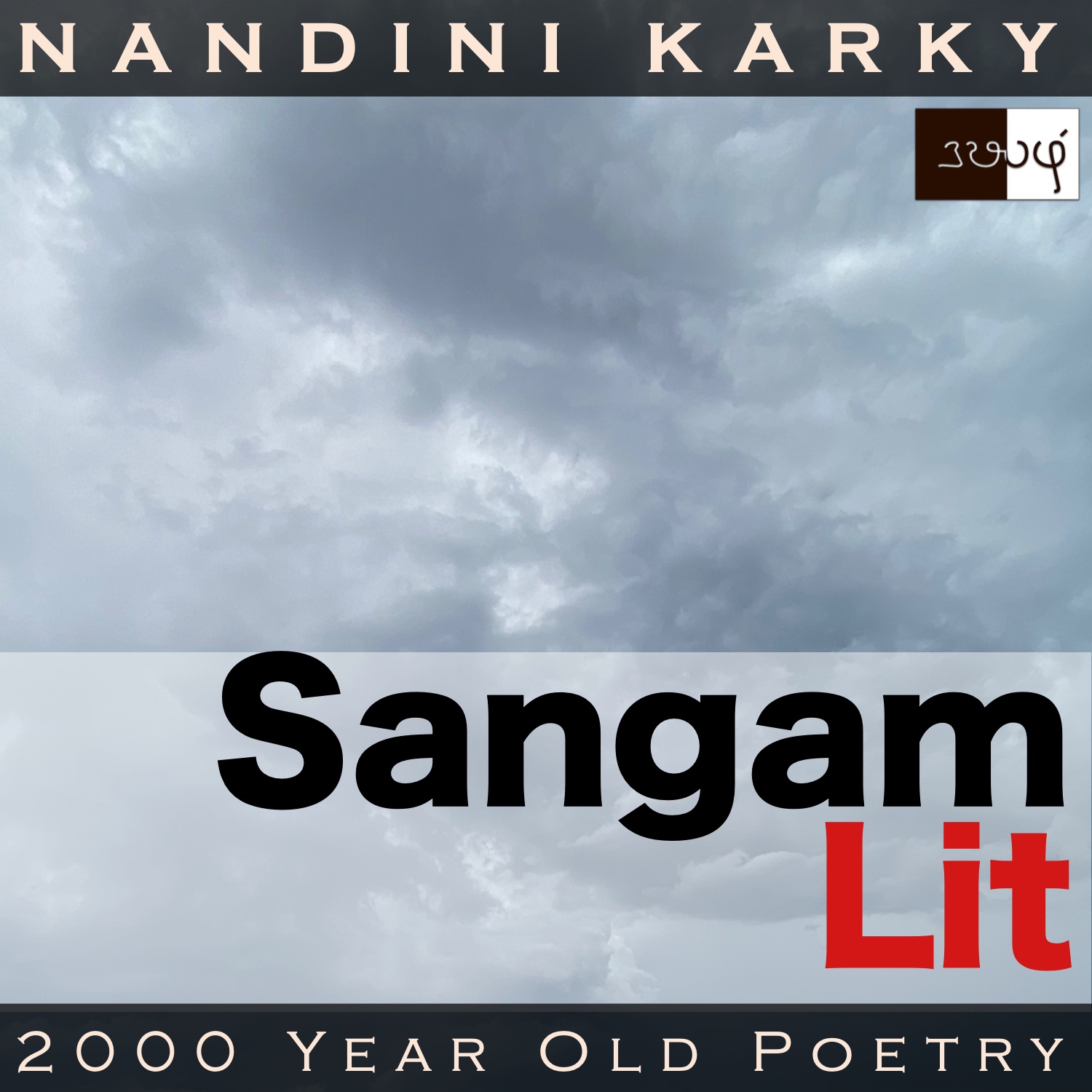Podcast: Play in new window | Download
Subscribe: Apple Podcasts | Spotify | Amazon Music | Android | iHeartRadio | TuneIn | RSS | More

In this episode, we perceive the form a season takes in the mind of a lady, as depicted in Sangam Literary work, Kurunthogai 197, penned by Kachipettu Nannaakaiyaar. The verse is situated in the coastal regions of ‘Neythal’ and speaks in the voice of the lady to the confidante, conveying her torment as the man continues to be parted away.
யாது செய்வாம்கொல்-தோழி!-நோதக
நீர் எதிர் கருவிய கார் எதிர் கிளை மழை
ஊதைஅம் குளிரொடு பேதுற்று மயங்கிய
கூதிர் உருவின் கூற்றம்
காதலர்ப் பிரிந்த எற் குறித்து வருமே?
‘Time is out to attack me’ shouts out a voice in this verse. The opening words ‘யாது செய்வாம்கொல்’ meaning ‘what are we to do” is an expression of desperation. In ‘கார் எதிர் கிளை மழை’ meaning ‘the heavy downpour in the rains’, there’s mention of the rainy season, which falls between August and October, per the Tamil calendar. Next, we see ‘ஊதைஅம் குளிரொடு’ meaning ‘cold northern winds’ talking about yet another weather phenomenon. The words ‘கூதிர் உருவின் கூற்றம்’ meaning ‘Death in the form of the cold season’ echoes the core theme here. Ending with the words ‘எற் குறித்து வருமே’ meaning ‘it arrives, marking me’, the verse beckons us to listen with empathy.
Winds and rains seem to assail in this one. The context reveals that the man and lady were leading a married life when the man parted away from the lady to gather wealth. The lady languished in his absence. When the confidante speaks words of consolation to her, the lady says, “What am I to do, my friend? Bearing torment, filled with moisture, clouds accompanied by thunder and lightning brought forth wide-spread showers in the rainy season. Following that, fused with northern winds, arrives the cold season, taking the form of Death, targeting me, separated from my love!” With these words, the lady declares it is impossible to bear with the man’s parting now that the cold season too had arrived.
Time to explore the nuances. The lady starts with a gesture of helplessness, asking her friend what she is to do. Then, she describes what just happened in the rainy season, when bringing much pain along with moisture, the clouds ganged up with lightning and thunder and poured down on the lands. As if that was not enough, just then cold winds from the North were at her doorstep too. It’s the season of winter, and to her, it felt as if it had taken the form of Death, marking her as the target as she was parted away from the man!
When we look back with twenty-first century eyes, this emotion of seeing Death in a changing season seems exaggerated indeed. But, that’s how the poets seemed to have depicted a lady’s emotions when separated from her beloved. Yet another portrait of the Sangam woman as a helpless, naive person, at a loss in this world without her male companion! Moving away from these images that are not relevant to the now, we can focus on the acute portrayal of changing seasons that remains the same even today. The rainy season is followed by the cold months of winter, when winds from the North blow across the Tamil land. Instead of seeing this verse as a dictum for women, we can perceive it as a discourse about the unchanging elements of life then and now such as the rains, winds and seasons.




Share your thoughts...